Feather Tripler PCB for rapid prototyping of outdoor sensor projects
In this post we share designs for the new Feather Tripler PCB. The Feather Tripler design speeds up prototyping of field-ready scientific instruments making open hardware tools more accessible for environmental researchers and community scientists
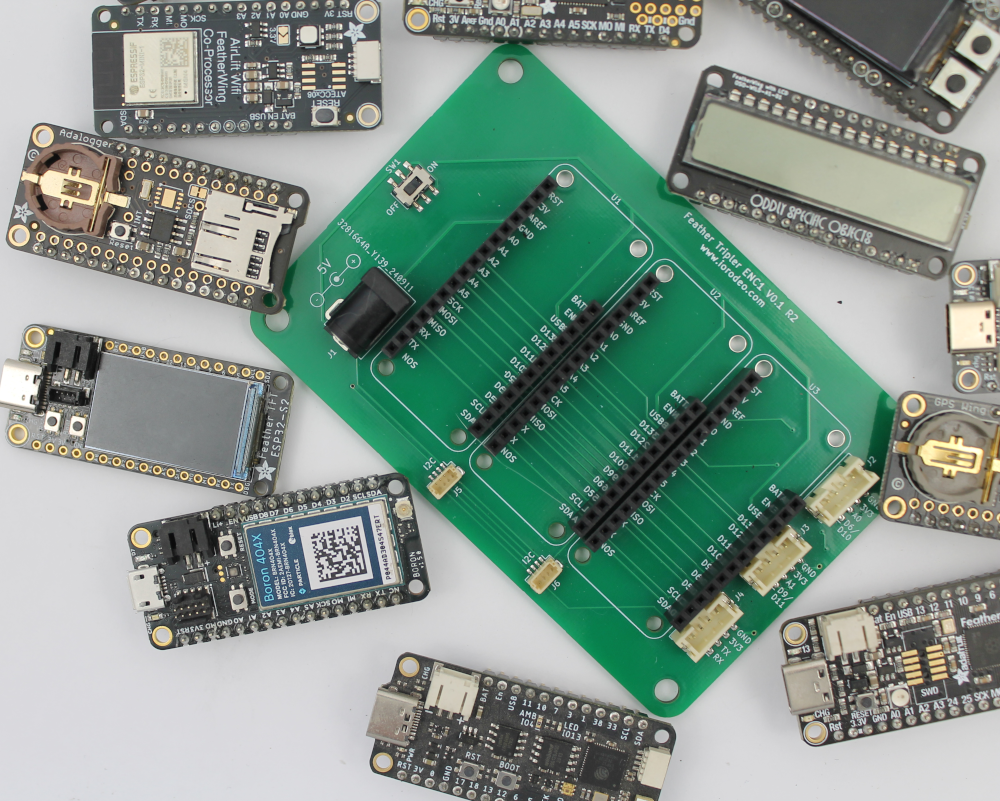
Open hardware scientific instruments typically begin as prototypes designed in the lab for use in indoor settings like a lab or classroom. Field-ready instruments, such as those used in outdoor environmental monitoring, can be more difficult to prototype, requiring custom weatherproof enclosures to protect electronics. In this post we will be focusing on tools and methods to rapidly prototype hardware for outdoor (or water-resistant) applications.
Taking prototypes from the lab bench to the field
It is now much easier to develop scientific instrumentation prototypes (both for indoor and outdoor applications) by making use of the wide-array of development boards such as the Raspberry Pi, Arduino and Adafruit Feather boards. There are also a wide-range of affordable sensors available. Some popular examples include sensors for monitoring air quality, weather sensors, pollutants and water quality.
However, one of the remaining barriers to rapidly deploying a prototype is designing a custom weatherproof enclosure. Generally this step involves selecting an off-the-shelf enclosure and making custom changes. Often this includes:
- Sourcing an appropriate sized enclosure
- Figuring out the best mounting strategy for electronics components including sensors
- Drilling or cutting custom holes in the enclosure for sensor and/or power cabling
- Sourcing mounting hardware
- Waterproofing entry points
This step can quickly become a huge barrier, especially if more than one prototype is needed or access to specialized machining is not possible. Minor design changes to a prototype can become laborious, taking up time that would be better spent deploying the instrument, testing sensors and collecting data.
Ideally the prototype enclosure could be easily fabricated without any special skills and using only commonly available tools such as screwdrivers.
In this post we are sharing designs for a new Feather Tripler PCB which can be used for rapid prototyping of outdoor monitoring projects. The new PCB works with the Adafruit Feather compatible boards and a standard waterproof enclosure with knockouts for customization. This post details the main PCB features and provides links to two use case examples.
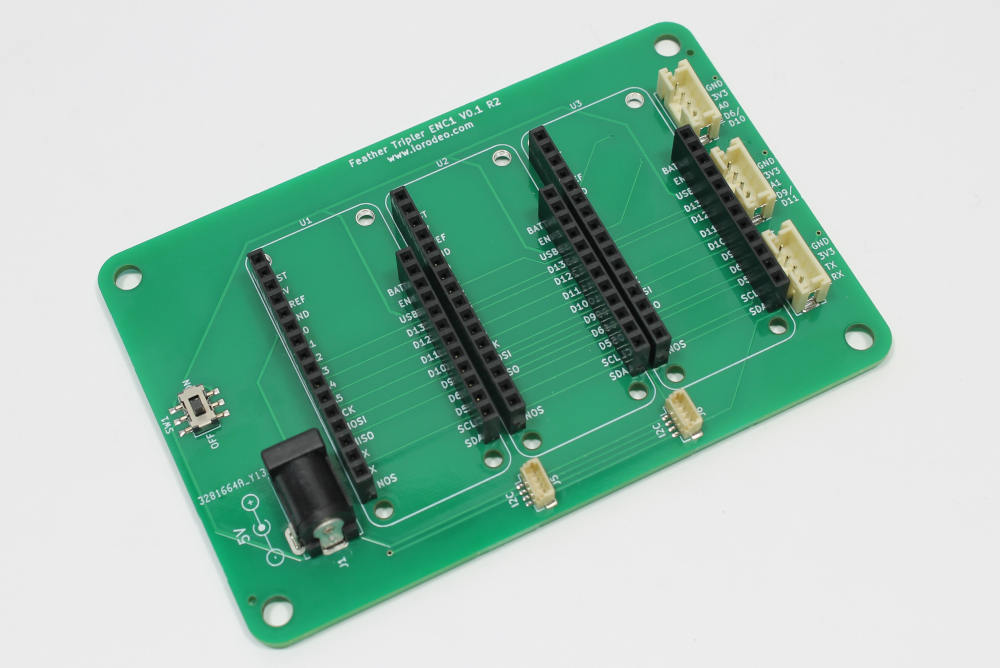
Selecting electronics and waterproof enclosures
In our work we often use Adafruit Feathers which come in a wide-variety, supporting many different microcontollers such as the RP2040, ESP32 & ATSAMD51. In addition Feathers offer a range of features such as battery connections, lipo charging, Wifi, CAN and BLE.
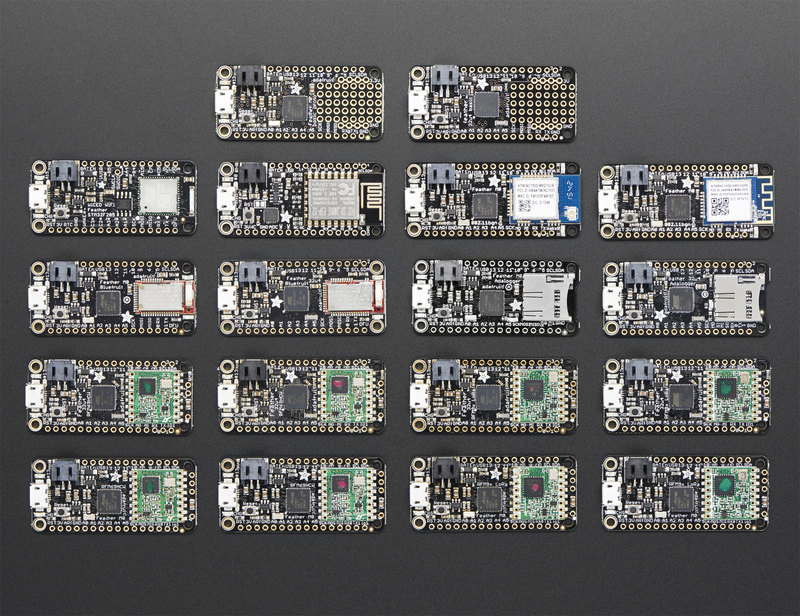
Feathers can also be used with a variety of FeatherWing add-on boards to expand capabilities e.g. add WiFi, GPS, LCD display, LoRa radio, data storage options and more. According to the Adafruit website there are currently over 100+ Feather compatible boards so there are a huge variety of options and combinations making it ideal for prototyping.
As the name implies, Feathers have a small and light form-factor for space-limited enclosures. For enclosures, we have been using the Polycase SK series which are weatherproof polycarbonate enclosures with metric knockouts that can simply be removed with a flat-head screwdriver. The standard knockout sizes are compatible with standard waterproof cable glands and vents.
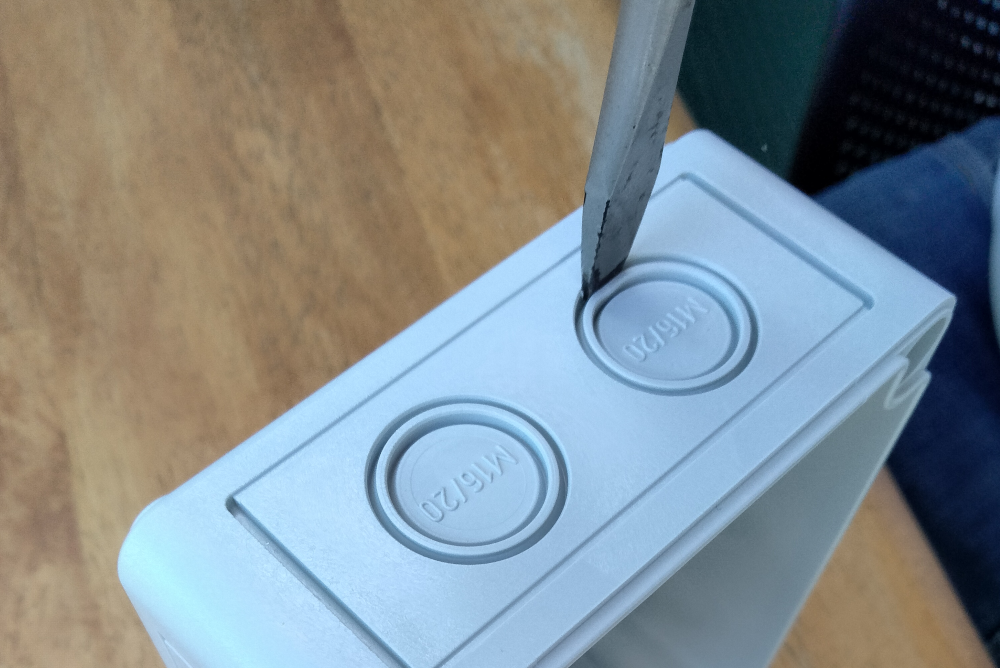
The advantage of using knockouts is that you don't need to do any custom machining steps. The SK series are affordable (approx. $20 for the SK-15) and come in a range of sizes. All of these features make them a good choice for rapid prototyping.
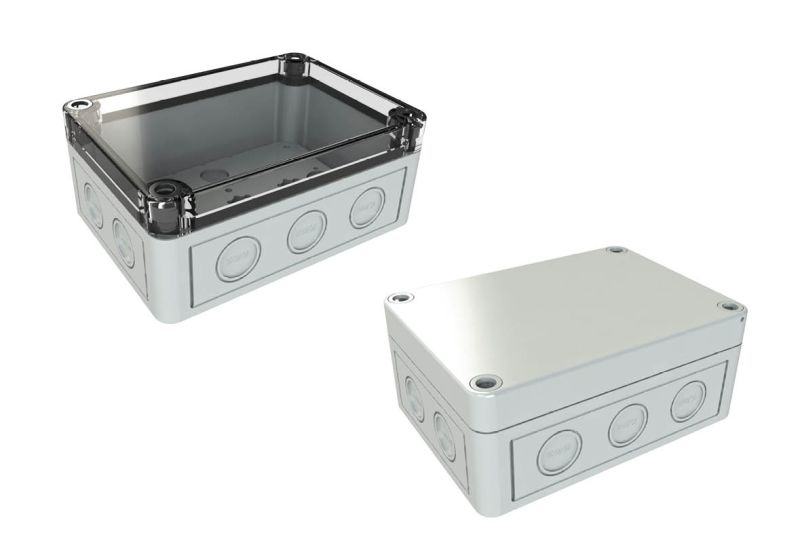
Feather Tripler ENC1
Our aim was to design a simple carrier board for prototyping field-ready instruments with the following parameters in mind:
- Compatible with Feather and FeatherWing expansion boards
- Mount into an SK weatherproof enclosure using a standard PCB mounting kit
- Offer several different sensor input options
The first design we have made is the Feather Tripler ENC1, designed to work with the Polycase SK-15 weatherproof enclosure.
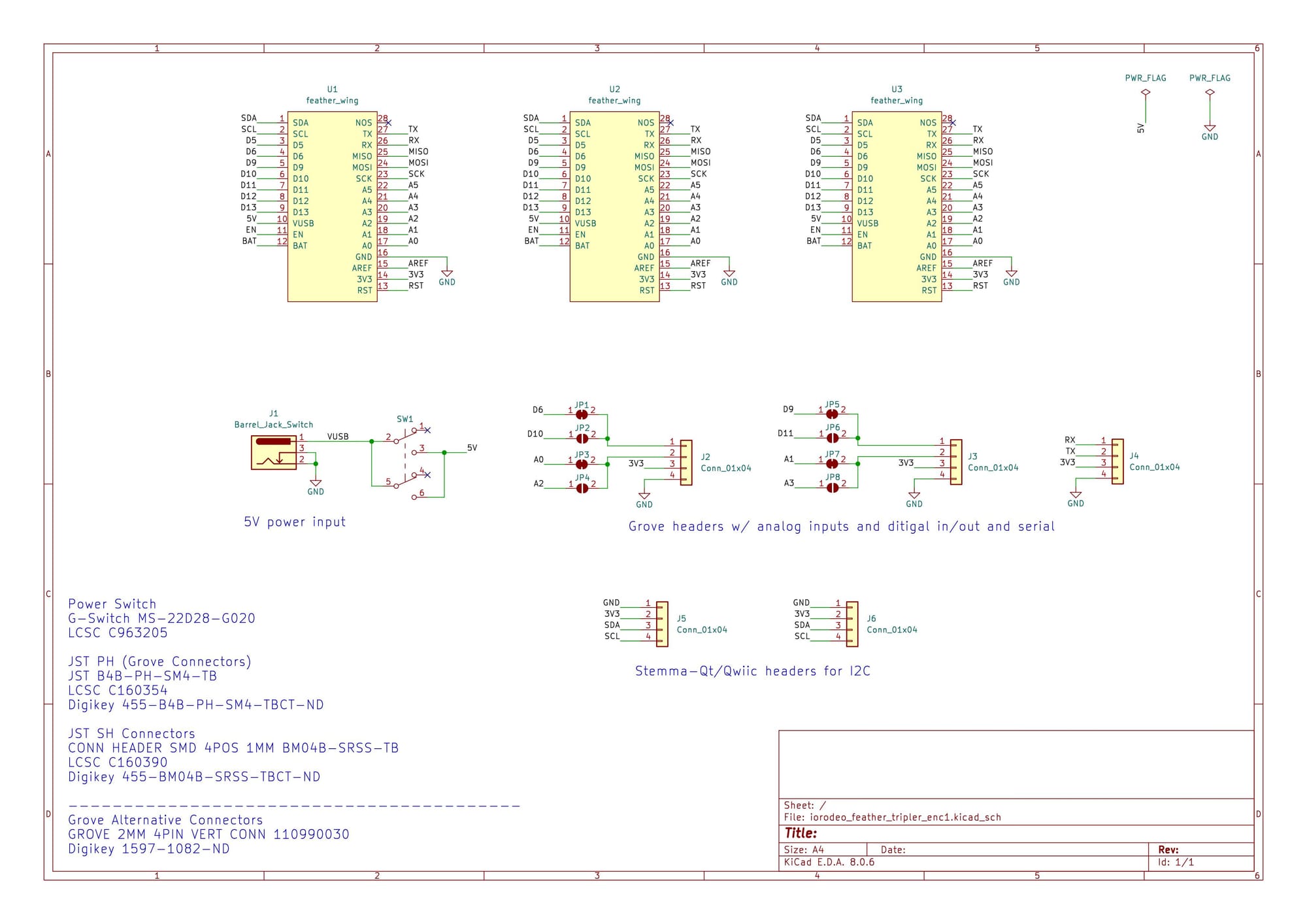
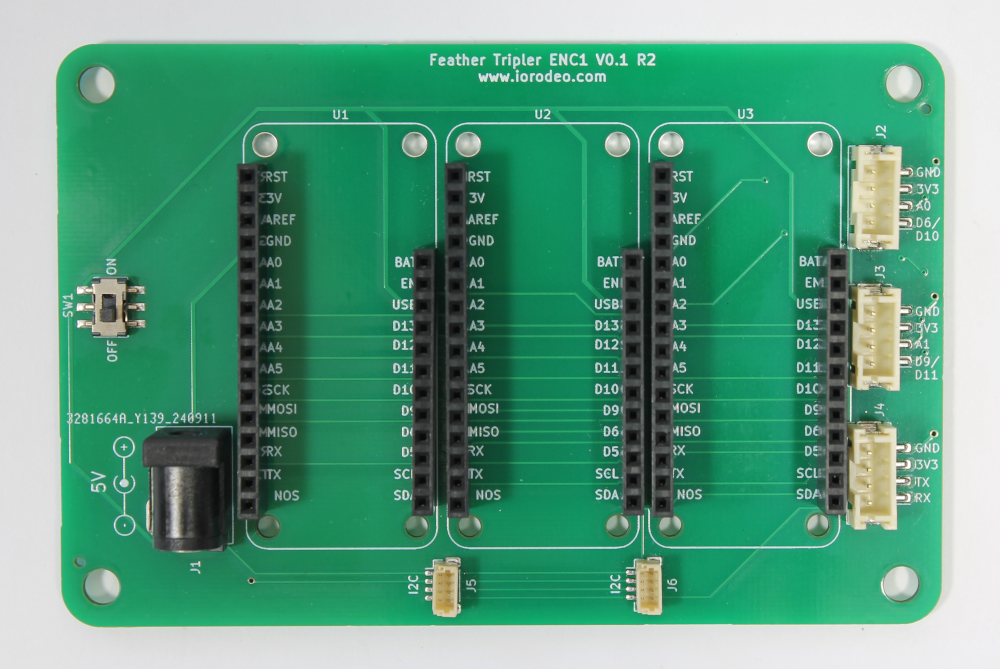

Feather & FeatherWing Headers
As the name suggests, the Feather Tripler has 3 sets of headers and will work with up to three Feather and FeatherWing boards (1 Feather + 2 FeatherWings).
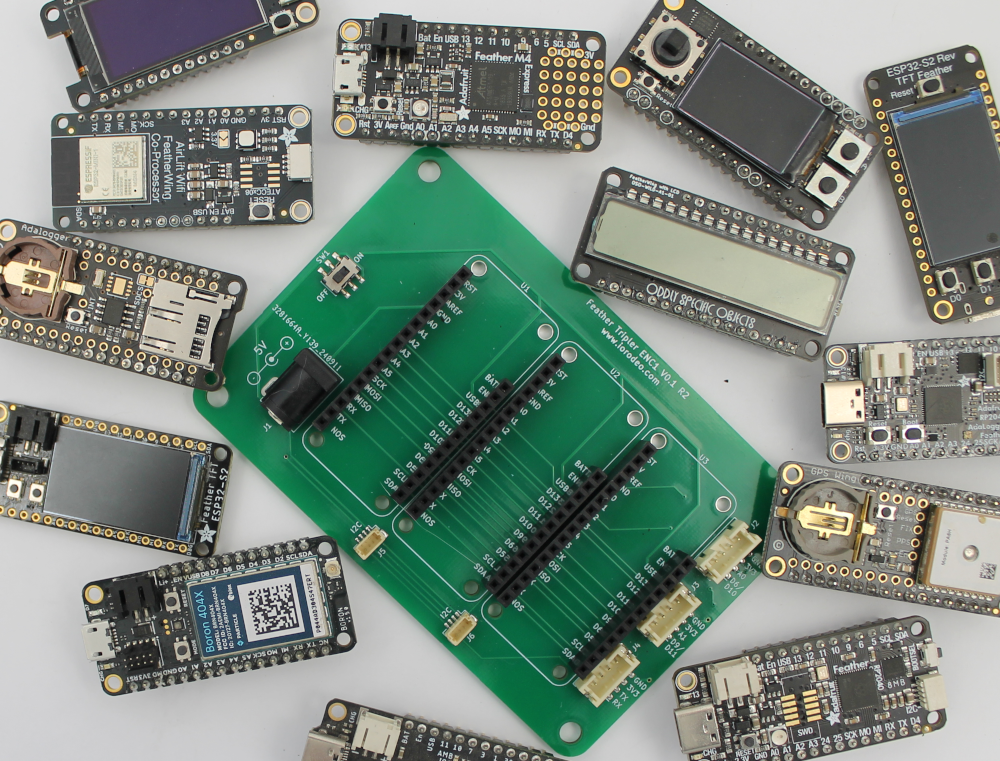
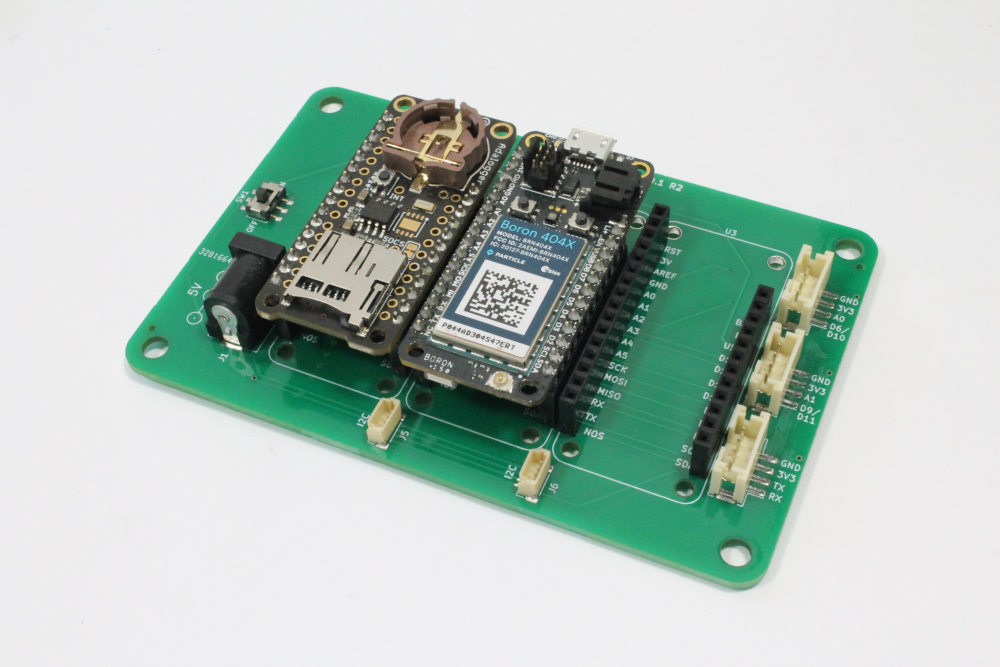
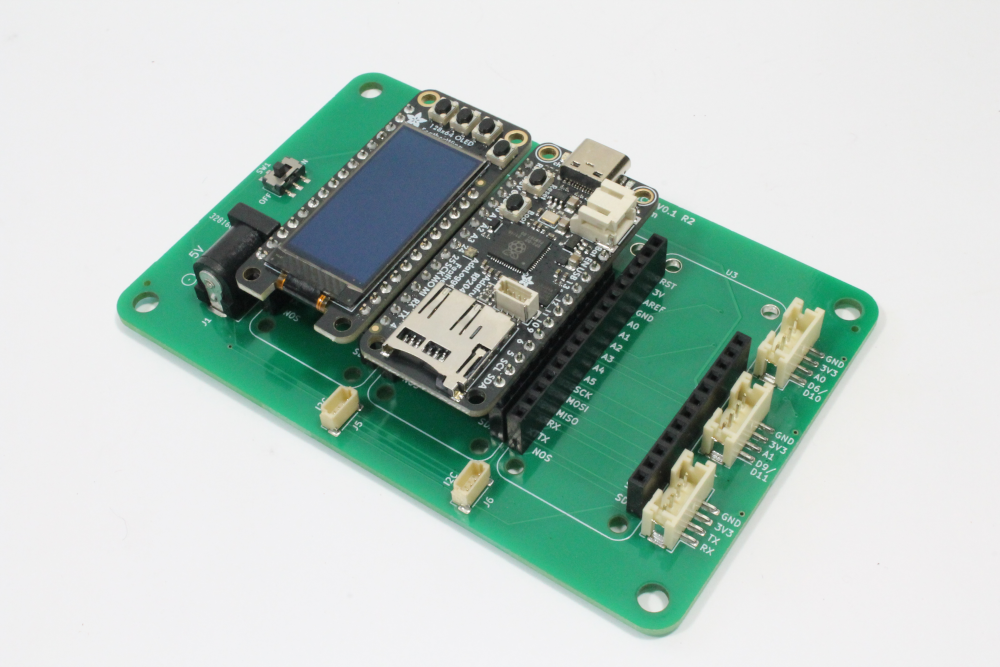
Connectors for sensors & other electronics
The Feather Tripler has three JST PH 4-pin connectors offering digital IO, analog input, UART, GND and PWR.
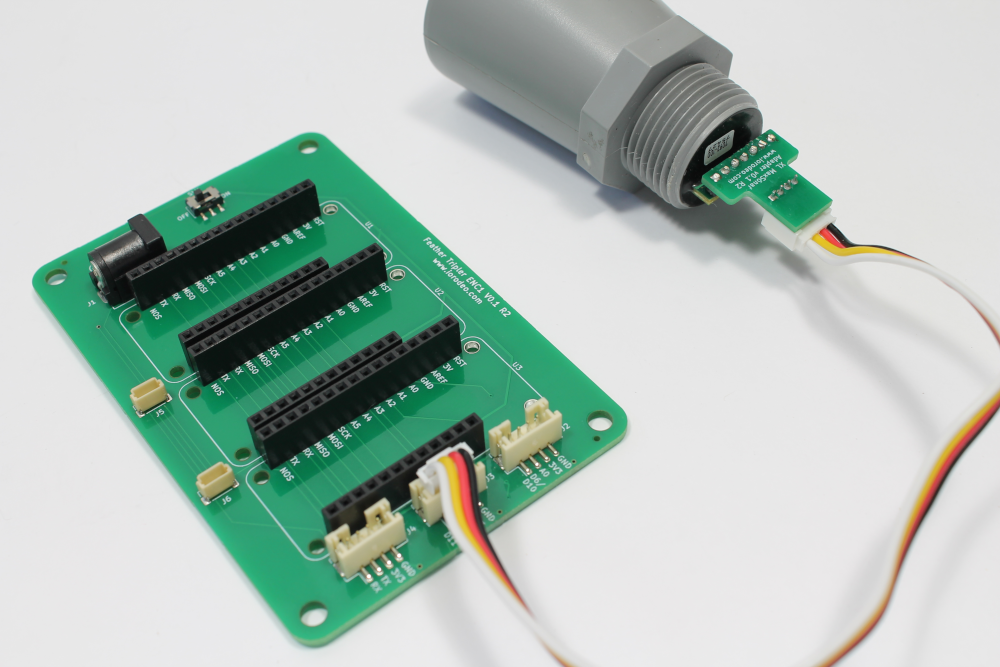
The Feather Tripler also has two I2C connectors (JST SH) with Stemma-QT/qwiic pinout for adding additional sensors. Any Adafruit STEMMA QT or Sparkfun Qwiic sensors will work.
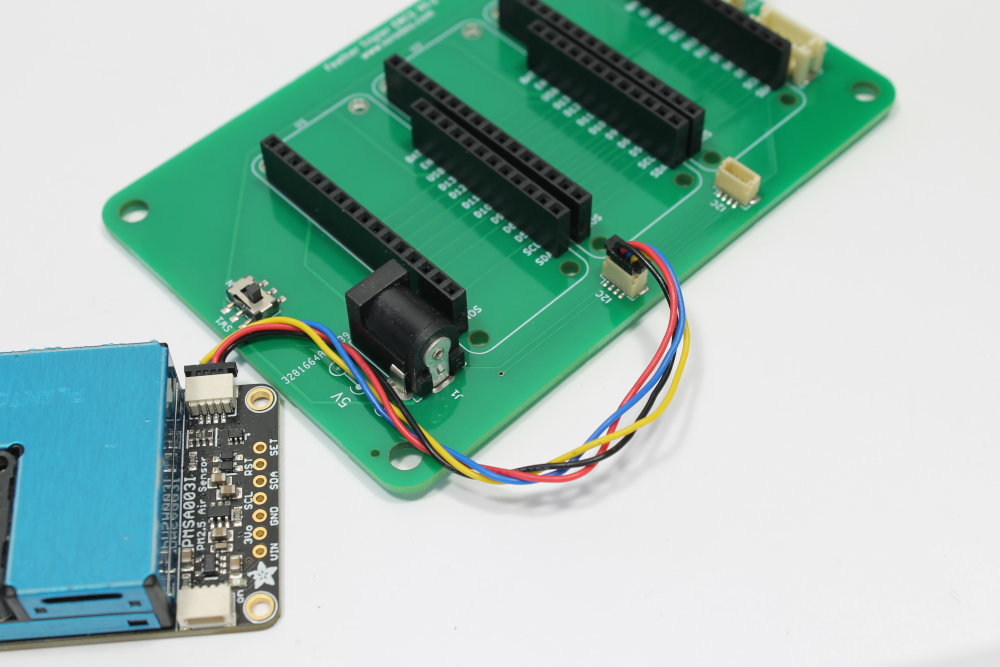
With the I2C connectors you can chain sensors together as shown in this example below.
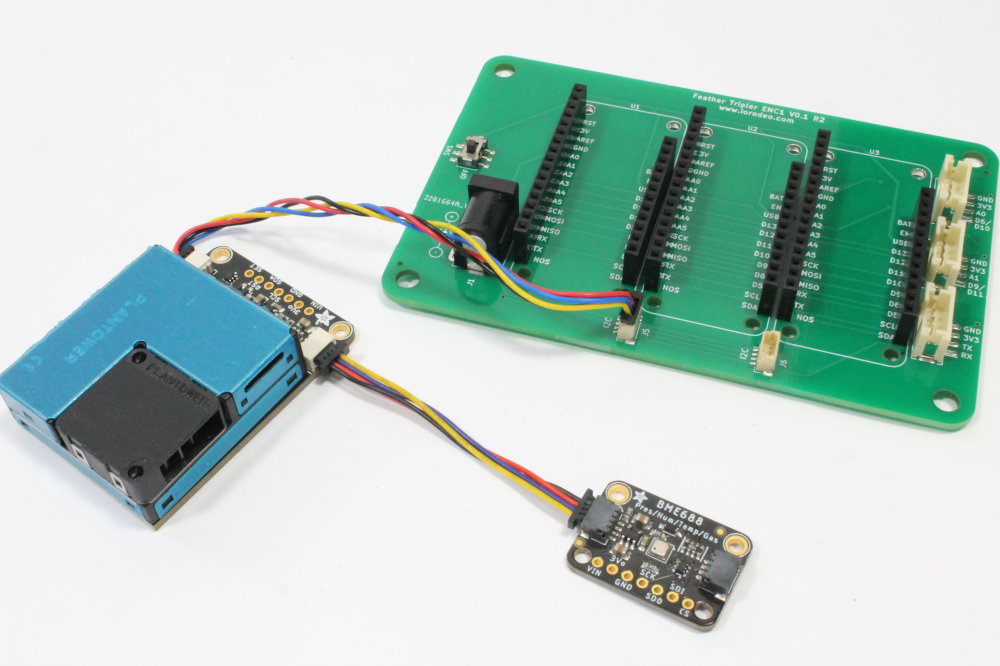
Power & Solar
There is a 5V power input via a 3.4 x 1.0 mm barrel jack connector. Compatible with the Voltaic solar 5V system or a 5V wall adapter with a similar connector. On/off switch for the 5V power supply.
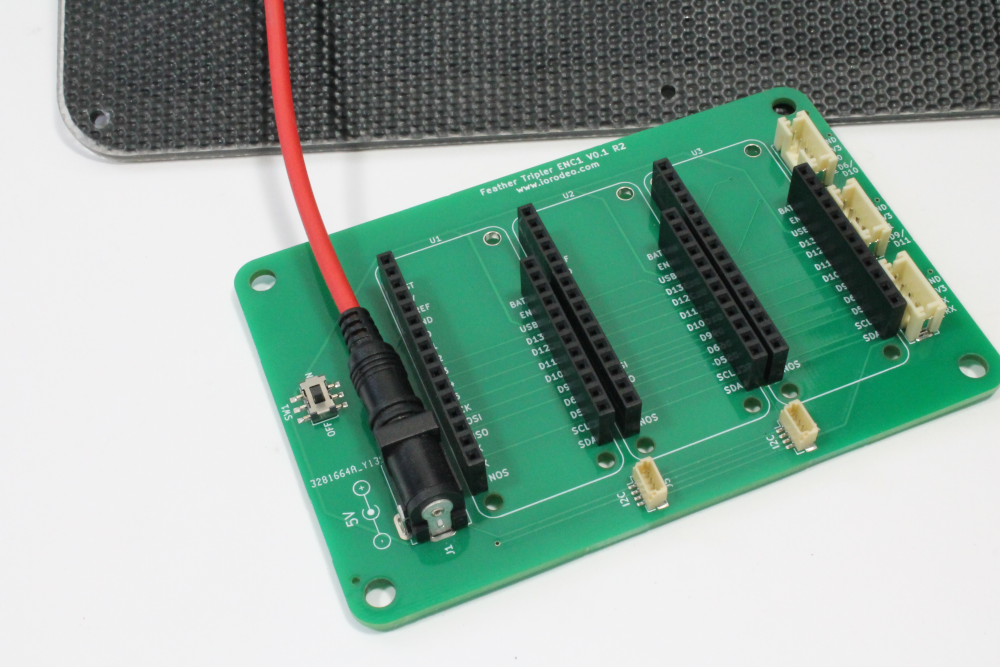
SK Enclosure Mounts
The Feather Tripler ENC1 PCB has 4 mounting holes to fit the SK-15 using the PCB mounting kit. No additional hardware is required. The open hardware design can easily be adapted to fit other SK enclosure sizes.
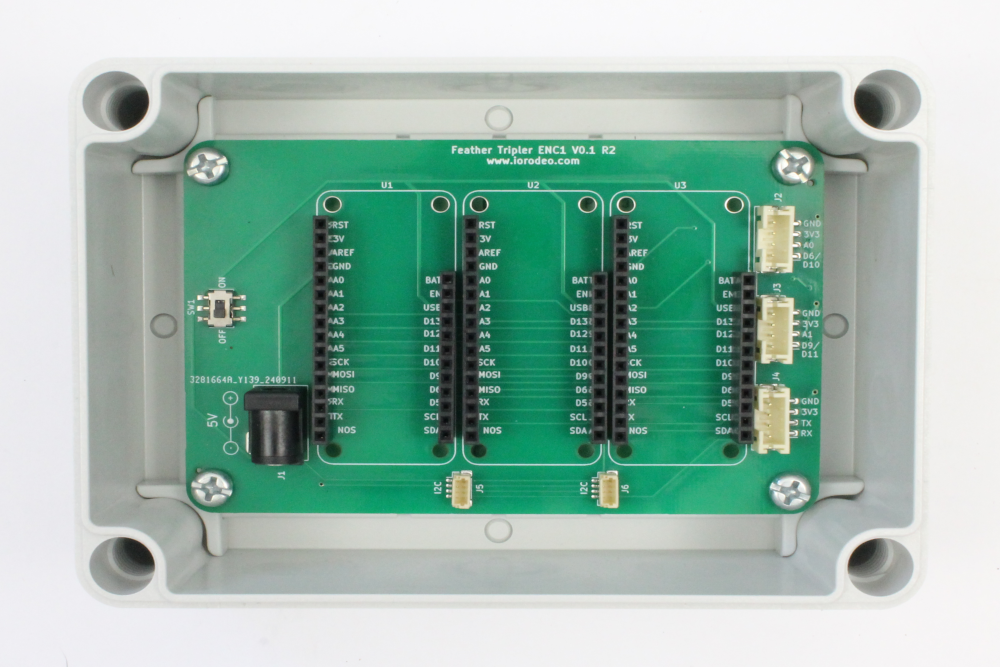
Learn more
Click on the links below for two project tutorials for building outdoor monitors using the Tripler Feather PCB.
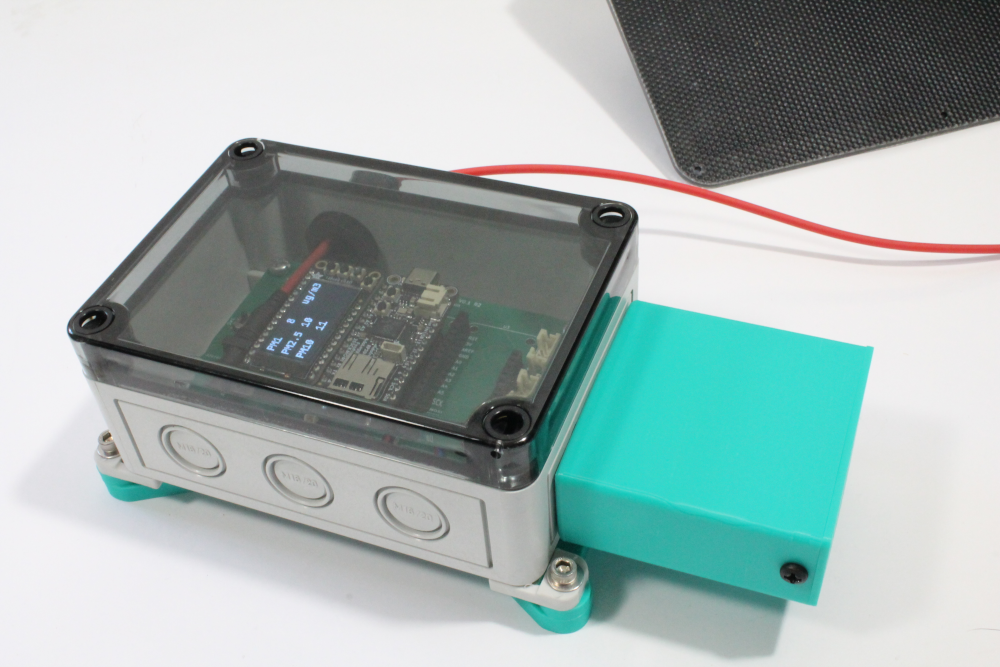
Air Quality Sensor
Learn More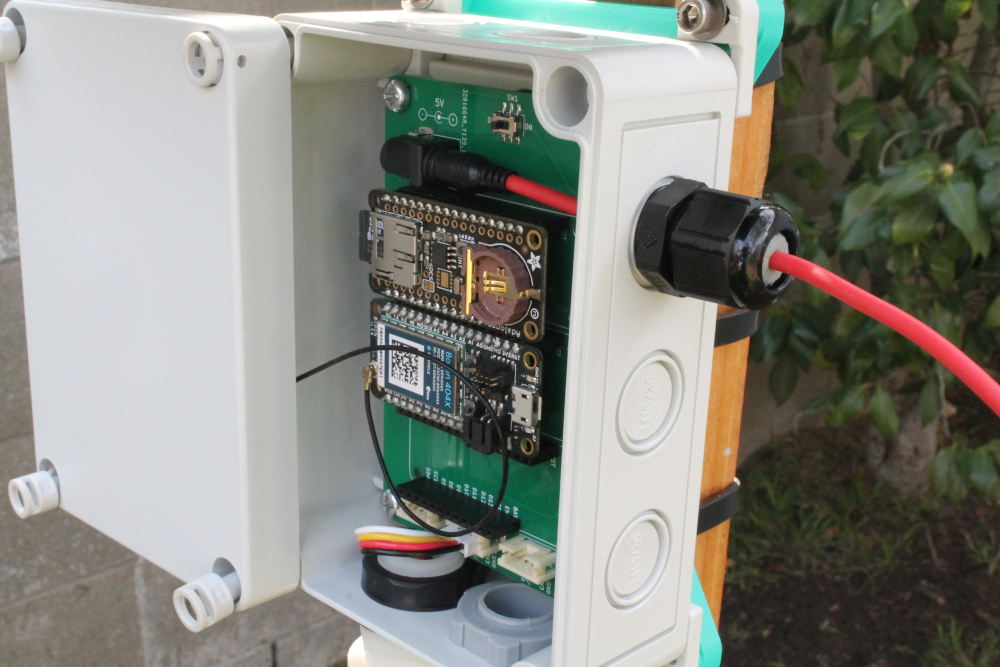




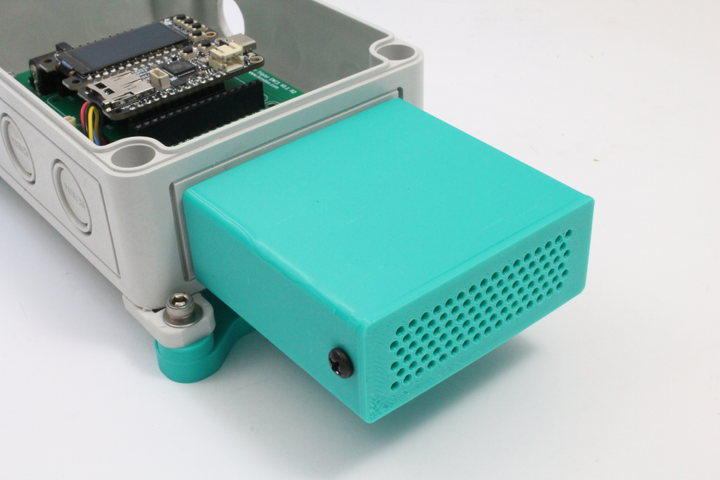
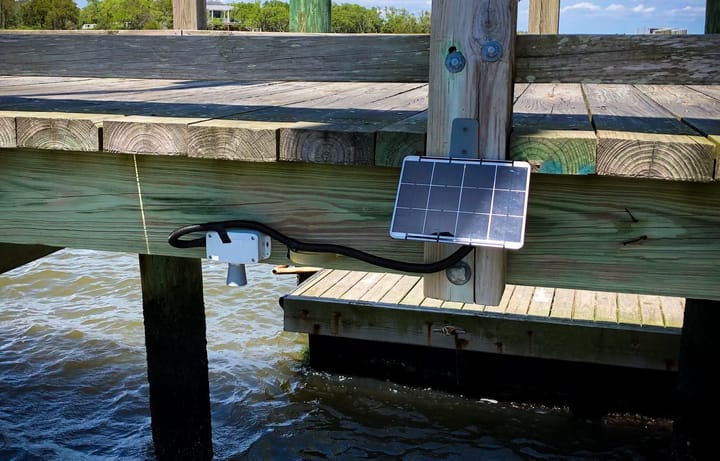
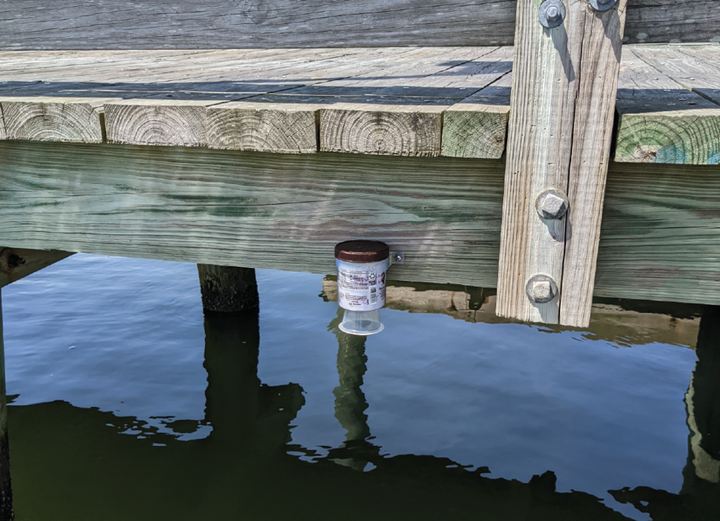
Comments ()